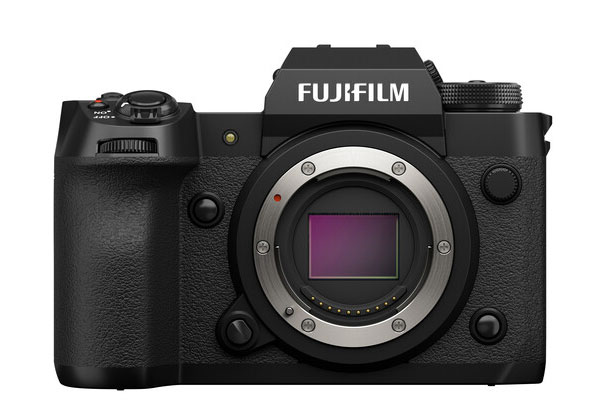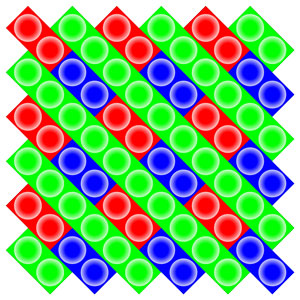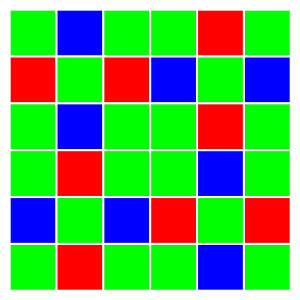
Some Fuji camera lovers thinks by tweaking the design of the X-Trans sensor and interpolation algo tech, it is easy to achieve lossless 80MP resolution of a 40MP X-Trans sensor, hers what they say, after reading it I thought, yes its possible since they already have the tech
X-TRANS EXR CMOS, boasting high resolution, high sensitivity, and high dynamic range.
It seems to be a 40MP 45-degree rotated X-Trans CFA. High resolution: 40MP interpolated output to 80MP, 2x efficiency high resolution; High sensitivity: 80MP pixels have the pixel size of 40MP pixels, 2x efficiency high sensitivity; High dynamic range: Dual native ISO readout 16bit RAF RAW, PDR surpasses GFX.
The abstraction of the Super CCD era, lingering as a nightmare for former Fuji users. – E88_8888
Let me break down both concepts for you, starting with the 40MP 45-degree rotated X-Trans CFA and then moving on to the explanation of 40MP interpolated output to 80MP and other advanced features.
1. 40MP 45-degree rotated X-Trans CFA
- 40MP: Refers to a sensor that captures 40 million pixels of data, like they are already using it from the Fuji X-H2 to the Fuji X-T5. As we know each pixel represents a point of information in the image, contributing to its overall sharpness and detail.
- X-Trans CFA: This stands for X-Trans Color Filter Array. The CFA is a matrix of color filters placed over the sensor to help capture different colors (red, green, and blue). Fujifilm’s X-Trans CFA is unique because it uses a more randomized, non-repeating color pattern compared to the traditional Bayer CFA used by most other manufacturers.
- But Now We have to MOVE to More Superior Tech That, they have used in the PAST – The EXR CFA, not the X-Trans CFA – They have to adopt the 45-degree rotated CFA pattern now in X-Trans sensor: The 45-degree rotation of the X-Trans CFA means that the filter pattern is tilted diagonally compared to the typical horizontal/vertical arrangement in a Bayer CFA. This further reduces problems like moiré and improves the capture of fine details and textures in images.
2. 40MP interpolated output to 80MP, 2x efficiency high resolution
This phrase refers to a technology where the 40MP sensor outputs images that have an effective resolution of 80MP by using interpolation and advanced processing. Here’s what it means:
- 40MP interpolated output to 80MP: The sensor itself physically has 40 million pixels, but using smart algorithms and the updated EXR Sensor CFA structure that we have discussed, the camera generates a higher-resolution image with details equivalent to an 80MP image. Interpolation involves estimating additional pixel data to “fill in the gaps” between actual pixels, thereby increasing the perceived resolution of the image.
- 2x efficiency high sensitivity: This indicates that the camera maintains a high level of sensitivity (good low-light performance) while achieving this higher resolution, essentially offering double the efficiency in terms of light gathering compared to a regular 80MP sensor.
Summary:
- 40MP 45-degree rotated X-Trans CFA refers to a 40MP sensor that uses Fujifilm’s unique X-Trans color filter array, rotated at a 45-degree angle to improve color accuracy and detail capture while reducing moiré.
- 40MP interpolated output to 80MP means the sensor uses interpolation to create images that appear as detailed as 80MP, without actually having 80 million physical pixels.
- The sensor retains the light sensitivity of a 40MP sensor, providing good low-light performance despite the high resolution.
- With dual native ISO and 16-bit RAW support, the sensor can capture a wide dynamic range with exceptional detail and color depth, surpassing even some medium-format cameras like the Fujifilm GFX series.
This technology aims to provide users with the best of both worlds: super high resolution, excellent low-light performance, and wide dynamic range without the usual drawbacks associated with high megapixel sensors.
More on this …
5-degree rotated X-Trans CFA isn’t a new tech, they have used it previously in their CCD (SuperCCD) and CMOS (BSI CMOS)
Fujifilm “EXR” color filter array

Fujifilm’s EXR color filter array are manufactured in both CCD (SuperCCD) and CMOS (BSI CMOS). As with the SuperCCD, the filter itself is rotated 45 degrees. Unlike conventional Bayer filter designs, there are always two adjacent photosites detecting the same color. The main reason for this type of array is to contribute to pixel “binning”, where two adjacent photosites can be merged, making the sensor itself more “sensitive” to light. Another reason is for the sensor to record two different exposures, which is then merged to produce an image with greater dynamic range. The underlying circuitry has two read-out channels that take their information from alternate rows of the sensor. The result is that it can act like two interleaved sensors, with different exposure times for each half of the photosites. Half of the photosites can be intentionally underexposed so that they fully capture the brighter areas of the scene. This retained highlight information can then be blended in with the output from the other half of the sensor that is recording a ‘full’ exposure, again making use of the close spacing of similarly colored photosites.
Fujifilm “X-Trans” filter

The Fujifilm X-Trans CMOS sensor used in many Fujifilm X-series cameras is claimed to provide better resistance to color moiré than the Bayer filter, and as such they can be made without an anti-aliasing filter. This in turn allows cameras using the sensor to achieve a higher resolution with the same megapixel count. Also, the new design is claimed to reduce the incidence of false colors, by having red, blue and green pixels in each line. The arrangement of these pixels is also said to provide grain more like film.
Here’s a comparison table outlining the key differences between the Fujifilm EXR color filter array and the Fujifilm X-Trans color filter array:
| Feature | Fujifilm EXR Color Filter Array | Fujifilm X-Trans Color Filter Array |
|---|---|---|
| Type of Sensors | Used in both CCD (SuperCCD) and BSI CMOS sensors | Primarily used in CMOS sensors in X-series cameras |
| Filter Orientation | 45-degree rotated | Randomized, no fixed pattern, not necessarily rotated |
| Photosite Arrangement | Two adjacent photosites detect the same color | Red, green, and blue pixels are interleaved in a unique pattern |
| Pixel Binning | Supports pixel binning to increase light sensitivity | Does not support pixel binning; utilizes a unique arrangement to reduce moiré |
| Dynamic Range | Can record two different exposures for increased dynamic range | Higher dynamic range due to improved arrangement and color accuracy |
| Anti-Aliasing Filter | Often requires an anti-aliasing filter due to potential for moiré | Designed to reduce moiré, can be used without an anti-aliasing filter |
| Color Fidelity | Less effective in reducing false colors | Better resistance to false colors, producing more natural tones |
| Grain Appearance | May produce a digital grain pattern | Mimics the grain structure of film, providing a more organic look |
| Software Support | Generally well-supported in various raw processing software | May lack full support in third-party software (e.g., Lightroom) due to custom pattern |
Summary of Key Differences:
- EXR CFA: By employing the two-exposure system and pixel binning, the EXR CFA can effectively increase the resolution of captured images. This results in images that can appear more detailed, particularly in challenging lighting conditions where highlights and shadows need to be captured accurately.
- X-Trans CFA: While the X-Trans can produce high-resolution images, its performance is often limited by the lack of pixel binning and dual exposure features. Instead, it optimizes color accuracy and reduces moiré without enhancing resolution as effectively.
Conclusion / Admin Note –
If they Adopt the EXR color filter array to 5th Generation of the X-Trans sensor, for sure they can upscale resolution and add abilities like Single click HDR capture in existing flagship cameras.







While the EXR pattern could enable effective resolution improvements and even make 40MP APS-C sensors produce images that look close to 80MP, this would largely be a result of interpolation and advanced image processing rather than a true doubling of pixel count. True 80MP resolution would require a sensor with that actual pixel count, which is fundamentally different from achieving it through software-based upscaling.
In short, yes, Fujifilm could simulate an 80MP output using techniques from the EXR CFA, but it wouldn’t be a true 80MP sensor in the hardware sense. The real benefits would come from improvements in dynamic range, noise performance, and light sensitivity, rather than genuine pixel resolution.
I have used HS50 EXR camera of my friend during a safari, the autofocus speed and details were amazing
I have provided simulation matlab code which is not a commercial grade demosaicing algorithm, but is sufficient to simulate checkerboard interpolation for a rotated 45 degree X-Trans CFA.
https://ww2.mathworks.cn/matlabcentral/fileexchange/173440-x-trans-cfa-w-45-rotation-checkerboard-demosaicing
Noise-free DPR lab scene image sampled at 50M (decoded to 100M) yielded a PSNR of 39dB (typically 100M Bayer images are above 43dB), taking into account that rotating the large pixels equates to a low-pass, which affects the PSNR measurements. This verifies that it basically works.
THanks E8M for your input